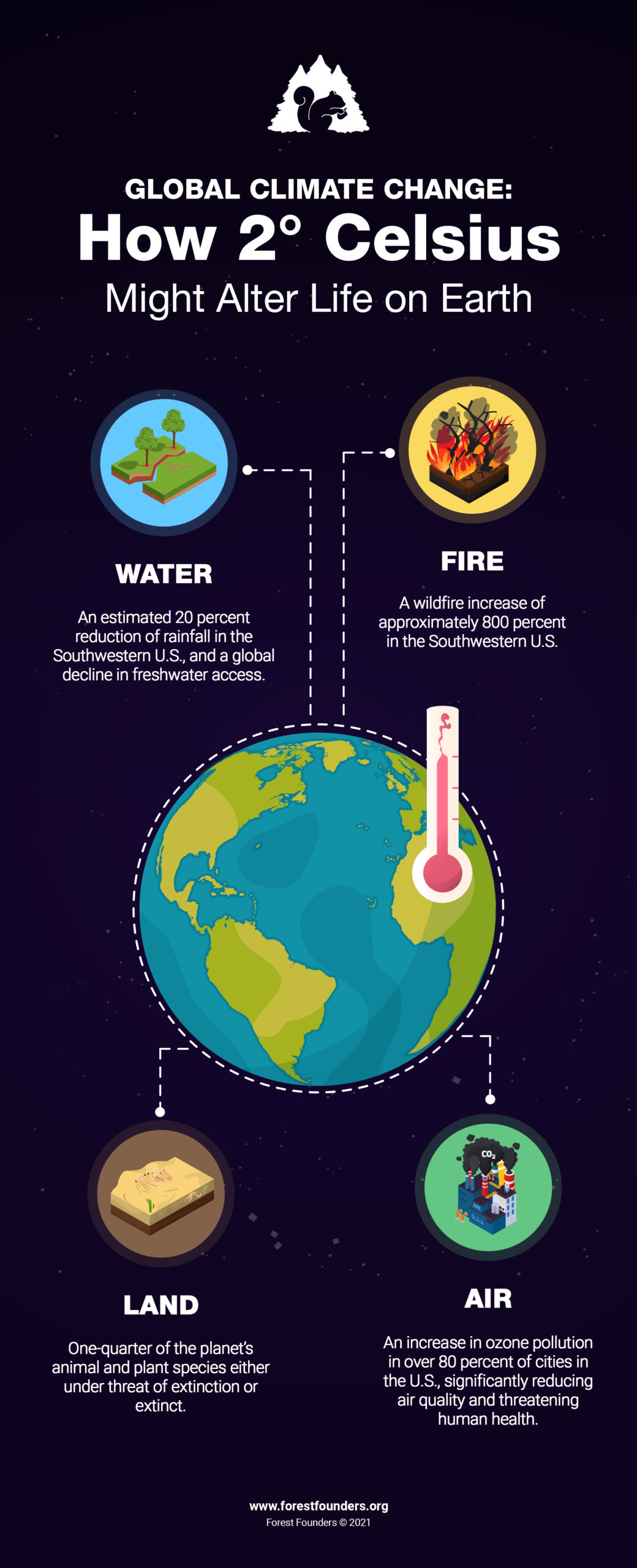When we use the phrase “climate change,” what exactly do we mean?
Global climate change is a description of a widespread rise in temperatures around the world over the course of years and even decades. The global climate has risen because of a combination of natural events and human impact, but it is the human impact that has driven the biggest changes to the climate over the past hundred years. Human interference has caused such a significant effect on climate because so many of our lifestyle behaviors are dependent upon activities that emit harmful greenhouse gasses. From driving to work to using a smartphone, most of our activities affect climate.
How Human Behavior Affects Global Climate
The increase in global climate is caused by the high volume of greenhouse gasses emitted into the atmosphere. Greenhouse gasses increase climate because they act as a sealant, preventing energy from the sun from radiating away from the planet. As a result, the planet’s temperatures get warmer and warmer.
Greenhouse gasses include Carbon Dioxide (CO2), methane, nitrous oxide, chlorofluorocarbons, oxygen, and water vapor. It’s the high volume of CO2, methane, chlorofluorocarbons that absorb heat, and those are the emissions that are generated in the highest volume by human activities. Agriculture and burning fossil fuels are the greatest producers of greenhouse gas emissions, but removing forests also increases the volume of harmful emissions.
Rising temperatures threaten all of the Earth’s functions. If the temperatures rise only 2 degrees Celsius, there could be horrible consequences. These include:
- Approximately 20 percent less rainfall in the Southwestern region of the United States.
- An 800 percent increase in wildfires in the Western United States.
- Roughly one-quarter of the Earth’s plant and animal species will either become endangered or extinct.
- Tropical storms, hurricanes, and monsoons will increase in frequency and intensity.
- Dangerous levels of ozone polluting the air quality of more than 80 percent of United States cities.
- Fresh water access will decline by 20 percent.
Fortunately, we have multiple models and technologies that help us predict how our behaviors will impact the global climate. These tools will allow us to plan for the changes to the environment, and even change our activities so that the outcomes won’t be as severe. Because global climate change tends to happen very slowly, we have a valuable opportunity to reverse the most damaging trends. With scientific research and a united effort to modify human behaviors that most impact the environment, we might be able to help preserve our planet.

Climate Models
What are climate models?
Climate models are scientific tools used to predict the different ways the rising climate will affect different regions. These are very advanced computer-assisted formulas that use information about the different systems (atmosphere, biosphere, hydrosphere, and lithosphere) to learn the ways human activities can change the way those systems relate to each other. This lets us know whether our actions will harm our ecosystem, and how badly.
A climate model is extremely complex. In fact – one global climate model requires enough computer code to fill nearly 20,000 printed pages! The supercomputer required to run such a complicated formula can be as big as an entire tennis court.
There are different types of climate models. Some focus only on a single part of the world, others might focus on one part of a single system, and others might predict activities of all of the systems on the entire planet. Different models are used to let us know how our behaviors influence different elements
For example, climate models can be very helpful in discovering the areas where the water supplies will be reduced as a result of rising temperatures. This will allow local governments and non-profit organizations to plan and discover the best ways to protect the people who live there.
Climate models can also show how rising sea levels will affect different populations. For example, if a climate model predicts that a city on a coastline will be overwhelmed by sea water in 25 or 50 years, the federal, state, and local governments can prepare.
Additionally, the mathematical models can measure how effective our behavior changes are.
However, it’s important to recognize that climate modeling is not perfect. There are limitations to what a climate model can predict because the information used to inform the predictions always changes. This is because human behaviors can vary widely, and if people’s behaviors do not remain consistent, the climate models’ predictions can be affected.
As global citizens, it is our responsibility to treat global climate change as a truly serious threat. Only by changing our relationship to the Earth’s resources and modifying our most damaging behaviors will we avoid some of the most destructive outcomes.
Forest Founders was created in response to the global destruction of forest cover. Forests are among the best resources we have for the reversal of climate change, because established trees absorb harmful CO2 from the atmosphere. By committing to large-scale reforestation and forest preservation, we can effectively restore the health of our planet and protect its many inhabitants.
To learn more about Forest Founders’ philosophy, please visit our information page.